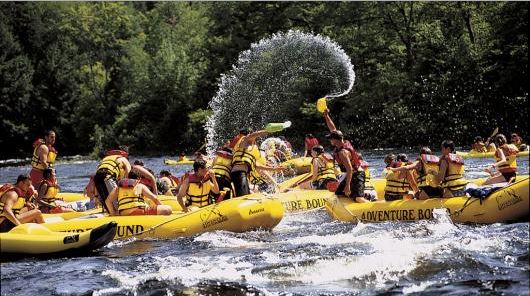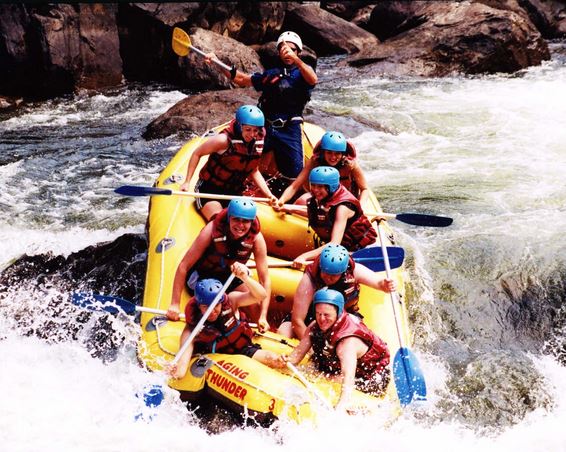A Guide to White Water Rafting
Whether on vacation or just getting out of the house to cool off, rafting is always a fun and invigorating activity. It’s a great way to enjoy the outdoors no matter what your ability or experience level is. This popular sport is no longer limited to core mountain people, you and your family can equally enjoy the thrill of it as well. But there are a few steps that must be kept in mind before opting for the same.
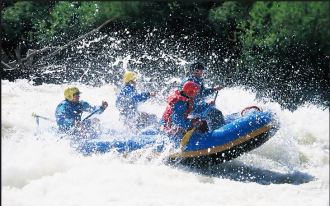 Paddling on whitewater requires working with the river current rather than fighting it. It is very important to understand the factors that influence water flows. Factors required for the formation of rapids are also included to facilitate the detection of rapids and falls even though such hazards are usually more appropriately recognized by direct audible and visual warnings.
Paddling on whitewater requires working with the river current rather than fighting it. It is very important to understand the factors that influence water flows. Factors required for the formation of rapids are also included to facilitate the detection of rapids and falls even though such hazards are usually more appropriately recognized by direct audible and visual warnings.
River reading
River reading includes recognition of obstacles and evaluation of the water flow so that an appropriate course can be chosen. A good route through obstructions in rapids is called a chute. Chutes are usually characterized by smooth water in which surface riffles suggest the letter “V” with the point downstream.
 An eddy is an area immediately downstream of an obstacle in a river where the current is relatively calm or may actually flow upstream. The eddy results from water filling the void behind the obstacle as the main current flows past. Eddies provide a place for rest stops in the midst of even the most difficult rapids.
An eddy is an area immediately downstream of an obstacle in a river where the current is relatively calm or may actually flow upstream. The eddy results from water filling the void behind the obstacle as the main current flows past. Eddies provide a place for rest stops in the midst of even the most difficult rapids.
The water flows over a rock it piles up on itself, creating small waves. If the water falls steeply enough, the first wave may curl back on itself creating a back wave or backroller. Water will also flow around the rock creating an eddy. The combination of eddy and backroller creates the hydraulic known as the souse hole.
 Standing waves result from the slowing down of a fast current and are usually associated with deep water. Because of the increased depth required to produce standing waves, they provide a good rock-free ride through a rapids.
Standing waves result from the slowing down of a fast current and are usually associated with deep water. Because of the increased depth required to produce standing waves, they provide a good rock-free ride through a rapids.
Basics to get started
When you get your boat, and you are ready to pile in, there are a few things to consider. The most important is how to position your paddlers.
Rowing is an integral part of rafting, so it is important to know how to row effectively. Your entire upper body and legs all play a major role in providing the raft sufficient power to run the rapids. You also need to lean slightly forward as you thrust the blade in the water for greater control.
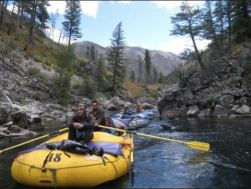 Rafting calls for a series of maneuvers that will enable you to steer the boat and overcome the boulders and other obstacles. Start with learning how to use your oars.
Rafting calls for a series of maneuvers that will enable you to steer the boat and overcome the boulders and other obstacles. Start with learning how to use your oars.
Backstroke Plant the blades in the water behind you, stretch your arms forward then pull your hands toward you. Notice that as the blades move in front of you, the Raft budges backward.
PushStroke This stroke will move the Raft forward. To do this, plant the blades in the water in front of you, position your hands near your chest then stretch your arms forward.
Turning With both blades planted in the water, push on one oar and then pull on the other. Do this simultaneously and the Raft will turn towards the direction of the oar that is doing the backstroke.
Shipping Keep an eye on where you’re headed and on the water. There may be rocks that can damage the oar blades
while you are rowing. Place the blades against the side of the raft. You can tuck them in front of you or against the side of the stern.
Paddling a river raft may not look hard as it looks since you might have seen numerous people do it in real life or in television. Paddling involves both skill and the ability to work with others as a team.
Let us understand how to paddle your raft correctly. Below are some tips on how to do it:
- Paddlers should be spread evenly on both sides of the raft.
- The paddlers’ inside hand (the hand which is on the side of the boat) is the one that grips the top of the paddle. The outside hand (the one that’s on the side of the river) holds the stem of the paddle.
- To move the raft forward, the paddlers make a digging motion. This is done by making left hand pull the stem of the paddle towards the aft or the rear end of the raft. The right hand at the same time pushes the top end of the paddle away from him or her. The opposite is done when making the raft move backward.
- To move to the right, paddlers on the right paddle backwards while those on the left do the forward paddle. The opposite is done when moving the raft to left.
Your ultimate goal is to keep the raft parallel with the current. To avoid ‘wandering’, align the vessel with the current. Slow down by doing back strokes and make forward strokes to move ahead.
Ferrying
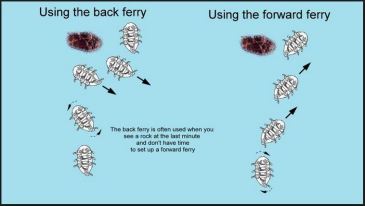 This is steering the Raft to either direction across the river. To ferry, make sure that the Raft is parallel with the flow. Make a narrow angle toward the bank. Notice that this maneuver slows you down a bit but it will move you sideways. Create a bigger angle and the current will push you further across the river.
This is steering the Raft to either direction across the river. To ferry, make sure that the Raft is parallel with the flow. Make a narrow angle toward the bank. Notice that this maneuver slows you down a bit but it will move you sideways. Create a bigger angle and the current will push you further across the river.
Turns/Pivots
You need proper oar or paddle strokes when turning the Raft. When it pivots, it means turning while staying in one place. When you need to pass through a tricky part in the river, you need to pivot the Raft so it can squeeze itself in the narrow spot. To exit the passage, you need to pivot the Raft again so it will be parallel with the current.
Sideslip
If there is an obstacle on your way and the situation does not permit you to turn or pivot, you can make sideslipping strokes – draw or pry strokes. If done correctly, you will be able to avoid colliding with the boulder.
The more you know, the more comfortable you will be, and the more you will enjoy the wonderful sport of White Water River Rafting.
For more information –
Contact: info@gofootloose.com

